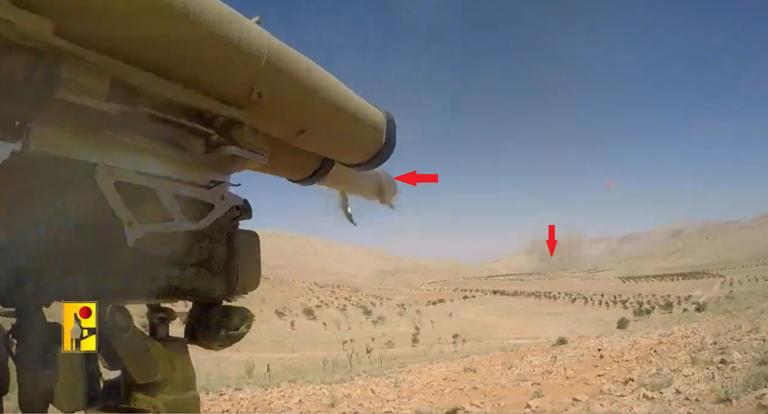
A threat to Merkava tanks: Russian-Iranian invention of Hezbollah
The Lebanese Hezbollah group is the most well-equipped and trained non-state entity launching attacks on Israel, boasting a substantial arsenal of rockets and anti-tank weapons. Compared to their Hamas counterparts, who primarily and largely ineffectively volley at Israeli tanks using RPG-7 grenade launchers with PG-7VR grenades or locally manufactured alternatives from the Gaza Strip. Hezbollah has distinctly more potent weapons at its disposal, such as ATGMs.
An example is the Iranian ATGM Dehlavieh, an Iranian replica of the Russian 9M133-1 Kornet-E. This weapon has an approximate range of 3 miles and is reputed for its ability to penetrate over 3 feet of steel armor, even if it’s hidden behind a rod armor or beneath blocks of reactive armor.
However, the Trophy active defense system can theoretically shoot down the Dehlavieh ATGM. It primarily struggles with heavy (6.6-11lbs) kinetic penetrators APFSDS moving at speeds exceeding 4921 ft/s. The 9M133-1 Kornet-E ATGM, like many comparable missiles, is significantly slower in comparison, reaching speeds just in excess of 820 ft/s.
How “Thar Allah” plans to overcome the Israeli Merkava
The Trophy system employed on the Merkava tanks intercepts incoming projectiles using explosively formed MEFP (Multiple Explosively Formed Penetrator) effectors. However, it first needs to gather data on the object’s direction of flight, calculate its impact point, and determine the trajectory for launching the MEFP effector. It accomplishes this through a ballistic computer that uses data collected by radar.
Theoretically, there should be a few seconds-long gap before the system resets. This is because debris from an obliterated target briefly obstructs the radar, registering as new objects immediately after an explosion. At this moment of ‘noise’, a second missile can potentially infiltrate the radar and strike the tank’s armor.
Making use of this opening necessitates meticulous synchronization of both missile launches; if the delay is too long, the attack proves futile, and if too short, one MEFP effector could destroy both missiles. The “Thar Allah” dual launcher has been designed to facilitate this; it is intended to ensure that one Kornet missile, after hitting the Merkava on the side, could theoretically neutralize it.
An accompanying video purportedly shows an Israeli tank being targeted by this system. Regrettably, the footage ends abruptly and does not reveal the extent of the damage. Depending on the various factors outlined above, the consequences of such a hit could range from negligible to severe.
Source » msn.com





